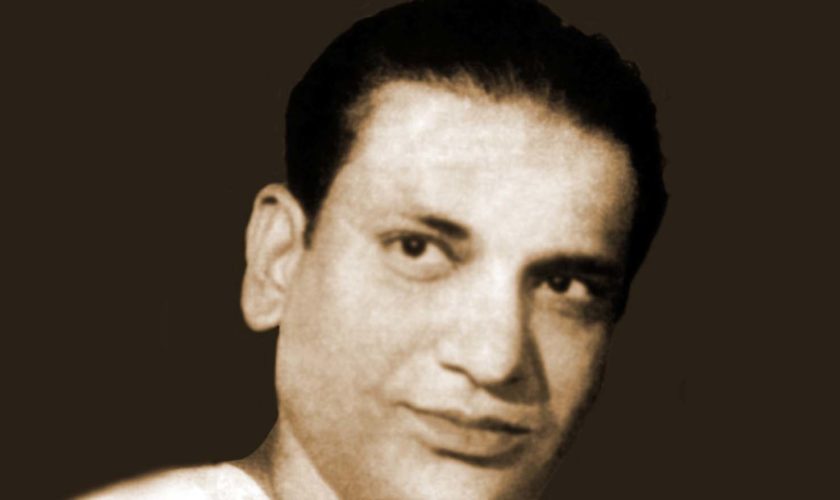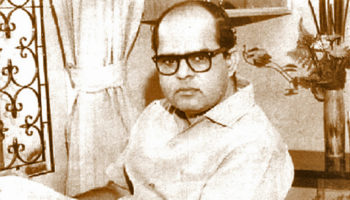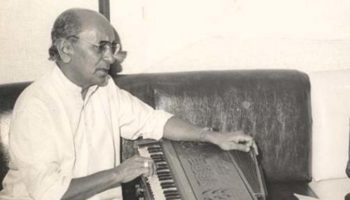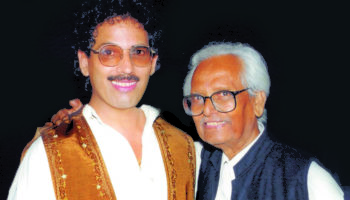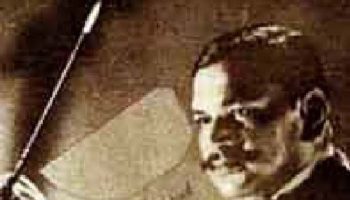Khemchand Prakash : The Lilting Luminary
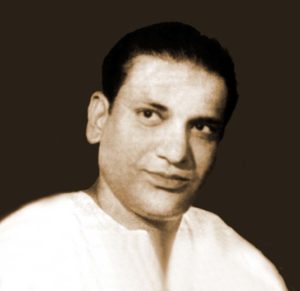 With the advent of sound in the early 30s, dialogues and songs became an intrinsic and indispensable element of Hindi cinema. Among the several composers who made their debut in the 30s, a few like R C Boral, Pankaj Mullick, Saraswati Devi, Anil Biswas and Khemchand Prakash created a niche for themselves as the pioneers and torch bearers of Hindi film music and achieved legendary status during their lifetime.
With the advent of sound in the early 30s, dialogues and songs became an intrinsic and indispensable element of Hindi cinema. Among the several composers who made their debut in the 30s, a few like R C Boral, Pankaj Mullick, Saraswati Devi, Anil Biswas and Khemchand Prakash created a niche for themselves as the pioneers and torch bearers of Hindi film music and achieved legendary status during their lifetime.
Khemchand Prakash was born on 12th December, 1907 in Sujangadh, Rajasthan. He was the eldest of the five siblings (three sons and two daughters) born to the second wife of his father. His father, Pt. Govardhan Prasad, was a court singer and Kathak dancer at the Jaipur palace and young Khemchand, also known as Khemraj, learnt the basic rudiments of music and dance from his illustrious father. He also learnt music from his uncle and Ustad Maula Baux Dhavsiwale and trained in Kathak dance under his step brothers Pt. Badriprasad and Pt. Jayalal. The urge to learn music took him to Agra where he learnt the Hem Raag from a Guru who was afflicted with leprosy.
Khemchand Prakash was a consummate Dhrupad singer and an accomplished Kathak dancer, the efficacy and influence of which is discernible in his great musical works as a composer. It is said that none could equal or match his dancing skills; he performed amazing feats by creating images of birds and animals using his feet while dancing on colour powders (gulaal) used in Holi festival and other rituals; he could dance with effortless ease on water or sugar crystals (bataasha) and even on shimmering sharp edged swords. He was also well versed in the ‘Ghoomar’, ‘Bhanwar’ and other folk dances of Rajasthan.
When in his teens, impressed with his dancing prowess, a British couple took Khemchand Prakash to England but alarmed by the false news of his mother’s death, he returned to India. He then performed as a musician in the royal court of Maharaja of Bikaner, a prominent seat of music. At an invitation from Rudra Shamsher Singh, the King of Nepal, he proceeded to Khatmandu and enjoyed the royal patronage for seven years. During this period, he performed as a court dancer and singer in the royal court of Nepal and also taught music to the queen and her attendants and other local artistes.
During the early 30s, he shifted base to Calcutta, the cultural capital of India then along with his younger brother Basant Prakash. For a brief stint, he worked as a radio singer and then as a music assistant to Timir Baran, one of the in house composers of New Theatres. He wasn’t much happy in Calcutta and, at the advice of his friend Prithviraj Kapoor, he came to Bombay. By the end of the decade, with his vast repertoire of music and good experience, Khemchand Prakash turned to music direction. Composers like Anil Biswas, Pankaj Mullick, R C Boral and Saraswati Devi were already established names then.
As a composer, Khemchand Prakash banked heavily on the rich and rhythmic folk music of Rajasthan and the adjoining regions. He was equally ingenious at simplifying the intricate and formidable ragas and bandishes and presenting them in a much easy-to-understand and enjoyable manner. In the early phase of his career, his works had the influence of the music of Bengal too. That could be because of his brief stint as a radio artiste in Calcutta and his tuneful association with the composers of New Theatres. But, otherwise, his compositions were quite distinct and disparate from those of his contemporaries.
Many of the compositions of Khemchand Prakash were women-oriented ~ ritualistic, ceremonial or seasonal ~ and were imbued and steeped in our rich tradition and culture. As such, they had a very ethereal and spiritual feel to them with an undercurrent of pathos and melancholy which was particularly perceptible in his later year compositions which reflected his lonely persona.
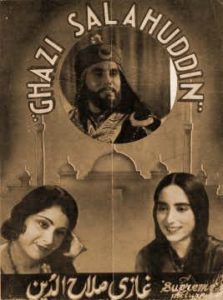 Khemchand Prakash got his first break to compose music for the film “Ghazi Salauddin” in 1939 which was followed by “Meri Ankhen” in the same year. Being a Kathak exponent, he composed a Kathak dance based classical number Main albeli titli re phulwa to go on Kathak danseuse Sitara Devi, the other heroine of the film. Both the films did nothing much to his budding and promising career.
Khemchand Prakash got his first break to compose music for the film “Ghazi Salauddin” in 1939 which was followed by “Meri Ankhen” in the same year. Being a Kathak exponent, he composed a Kathak dance based classical number Main albeli titli re phulwa to go on Kathak danseuse Sitara Devi, the other heroine of the film. Both the films did nothing much to his budding and promising career.
At the musical tribute organised by KEEP ALIVE in July 2001 to commemorate the 50th death anniversary of Khemchand Prakash, Naushad remembered with pride the short spell he worked as an assistant to the maestro in “Ghazi Salauddin” and “Meri Ankhen”. His amazing memory helped him recall and recite with comfortable ease the lyrics of a rare and remote song layered with heavy Urdu words ‘Allah ho baaqi kulle faani, Allah o baaqi meen kulle faani‘. He also explained the essence of the song that ‘Allah alone is the Supreme Truth; the rest all is impermanent and transient!’
Khemchand Prakash attained big success after he joined movie doyen Chandulal Shah’s Ranjit Movietone in 1940 and was on its pay rolls till the partition after which they too parted ways. His first film for Ranjit Movietone was “Holi” which was followed by a score of films like “Aaj Ka Hindustan”, “Chandni”, “Diwali”, “Dukh Sukh”, “Pardesi”, “Shaadi”, “Umeed”, “Mumtaz Mahal”, “Shehanshah Babar”, “Tansen” to name a few.
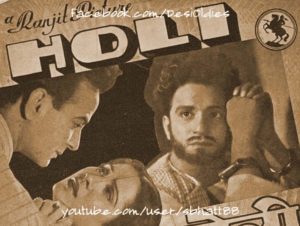
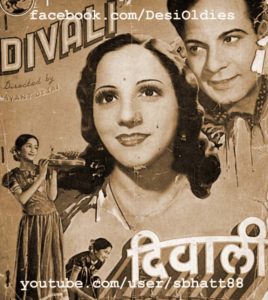 Incidentally, it is under the baton of Khemchand Prakash that one heard the first ‘Holi‘ and ‘Diwali‘ songs viz. Phagun ki rutt aayi re (based on UP folk and sung by Amritlal R Ojha and Kathak danseuse Sitara Devi) and Ghar ghar deep jale, ghar ghar shobha chhaayi (the first full song in chorus) and Jal deepak diwali aayi, jal deepak kyon jale na tu (by Vasanti).
Incidentally, it is under the baton of Khemchand Prakash that one heard the first ‘Holi‘ and ‘Diwali‘ songs viz. Phagun ki rutt aayi re (based on UP folk and sung by Amritlal R Ojha and Kathak danseuse Sitara Devi) and Ghar ghar deep jale, ghar ghar shobha chhaayi (the first full song in chorus) and Jal deepak diwali aayi, jal deepak kyon jale na tu (by Vasanti).
Holi and Diwali Film Posters Courtesy: facebook.com/desi oldies and youtube.com/user/sbhatt88
Most of his compositions were based on the rich folk music of Rajasthan and adjoining areas, the Maand, Keertan and Jaagran Bhajans and stylised in the ghazal, dadra, thumri and semi-classical mould. His favourite ‘Thaat’ is believed to be ‘Khamaj’ and many of his compositions were based on popular ragas like Chhaayanat, Des, Jayjawanti, Jhinjhoti, Kaafi, Kirwani, Malhar, Patdeep, Shankara, Tilak Kamod to name a few.
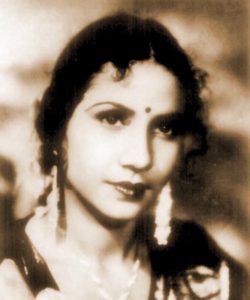 Apart from Khemchand Prakash, Ranjit Movietone had many other in-house talents: composers Gyan Dutt and Bulo C Rani and actress-singer Khurshid. It was in Ranjit where Khurshid met Khemchand Prakash, her mentor and soon she became his muse. Their successful sojourn took off with the song Pehle jo mohabbat se inkaar kiya hota from “Pardesi” (1941) inspired by Begum Akhtar’s popular ghazal: Diwana banana hai to diwana bana de. In fact, Khemchand Prakash gave a filmy touch with mass appeal to the styles popularised by ghazal singers like Mallika Pukhraj, Begum Akhtar and Kamala Jharia.
Apart from Khemchand Prakash, Ranjit Movietone had many other in-house talents: composers Gyan Dutt and Bulo C Rani and actress-singer Khurshid. It was in Ranjit where Khurshid met Khemchand Prakash, her mentor and soon she became his muse. Their successful sojourn took off with the song Pehle jo mohabbat se inkaar kiya hota from “Pardesi” (1941) inspired by Begum Akhtar’s popular ghazal: Diwana banana hai to diwana bana de. In fact, Khemchand Prakash gave a filmy touch with mass appeal to the styles popularised by ghazal singers like Mallika Pukhraj, Begum Akhtar and Kamala Jharia.
Khurshid shot to fame from anonymity and obscurity thanks to the mentoring and grooming of Khemchand Prakash. Their tuneful togetherness resulted in a number of ever resplendent and now immortal classics like Bhigoyi more saari re, Pati charanan gunn gaaun, Hari ke gunn gaaun main, Kit jaaun re mana (all from “Shaadi”), Nindiya jhulaave re (“Chandni”), Jo humpe guzarti hai, Dil ki dhadkan bana liya unko and Jala patang to qusoor ismein kiska hai (“Mumtaz Mahal”), Mohabbat mein saara jahan jal raha hai and Bulbul aa tu bhi gaa (“Shehanshah Babar”) and, not the least, the timeless classics like Ghata ghanghor ghor (inspired by Rajasthan folk song ‘Mor bole hai‘ and in mishra Sarang), Barso re (Megh Malhar), Dukhiya jiyara roye naina and Ab raja bhayo more baalam from Ranjit’s biggest commercial and musical hit “Tansen” (1943).
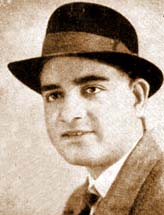 Ranjit’s Tansen (and Bhakta Surdas with music by Gyan Dutt) were the first films which K L Saigal signed (outside New Theatres) after migrating to Bombay. Incidentally, Khemchand Prakash’s association with the legendary singer dates back to the mid-30s when the former came in contact with the composers of New Theatres and started assisting Timir Baran who was then composing for the classic film “Devdas” (1935). It is believed that the immortal Saigal serenades Baalam aaye baso mere mann mein and Dukh ke ab din beetat naahin (traces of which can be noticed in Khemchand’s own Bina pankh ka panchhi hoon main sung by Saigal in and as “Tansen”) were actually composed by Khemchand Prakash. He is believed to have assisted R C Boral also but left him as he was neither compensated properly for his work nor given credit as an assistant.
Ranjit’s Tansen (and Bhakta Surdas with music by Gyan Dutt) were the first films which K L Saigal signed (outside New Theatres) after migrating to Bombay. Incidentally, Khemchand Prakash’s association with the legendary singer dates back to the mid-30s when the former came in contact with the composers of New Theatres and started assisting Timir Baran who was then composing for the classic film “Devdas” (1935). It is believed that the immortal Saigal serenades Baalam aaye baso mere mann mein and Dukh ke ab din beetat naahin (traces of which can be noticed in Khemchand’s own Bina pankh ka panchhi hoon main sung by Saigal in and as “Tansen”) were actually composed by Khemchand Prakash. He is believed to have assisted R C Boral also but left him as he was neither compensated properly for his work nor given credit as an assistant.
During his brief stint in New Theatres, he also did a cameo roles in films like “Street Singer” (1938) (the song Lo khaa lo madam khaana was picturised on Khemchand Prakash with a harmonium hanging from his neck) and “Sapera”. Yet another revelation is that Khemchand Prakash played the tabla for the rhythmic song Piya milan ko jaana (“Kapalakundala” – 1938).
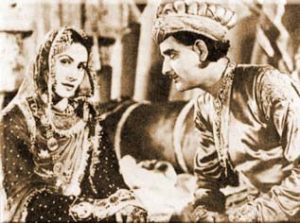 Coming back to “Tansen”, both Khemchand Prakash and K L Saigal collaborated in the film as though to fix the stamp of immortality on their brief musical association through all time evergreen classics like Deeya jalao (in raag Shudhh Kalyan), Sapta suran teen gram (in raag Yaman and in the now defunct Dhrupad style), Bina pankh ka panchhi hoon main, Kaahe gumaan kare (in thumri style), Rumjhum rumjhum chaal tihari (in raag Shankara), Baagh lagaadun sajni (in raag Bahar) and More balapan ke saathi chhaila (with Khurshid in raag Des). It is fully to Khemchand Prakash’s credit that he made Saigal sing these intricate raag based songs despite his lack of formal training in classical music. “Tansen” was, arguably, the first successful film fully based on classical music and remains a milestone in the career of Khemchand Prakash.
Coming back to “Tansen”, both Khemchand Prakash and K L Saigal collaborated in the film as though to fix the stamp of immortality on their brief musical association through all time evergreen classics like Deeya jalao (in raag Shudhh Kalyan), Sapta suran teen gram (in raag Yaman and in the now defunct Dhrupad style), Bina pankh ka panchhi hoon main, Kaahe gumaan kare (in thumri style), Rumjhum rumjhum chaal tihari (in raag Shankara), Baagh lagaadun sajni (in raag Bahar) and More balapan ke saathi chhaila (with Khurshid in raag Des). It is fully to Khemchand Prakash’s credit that he made Saigal sing these intricate raag based songs despite his lack of formal training in classical music. “Tansen” was, arguably, the first successful film fully based on classical music and remains a milestone in the career of Khemchand Prakash.
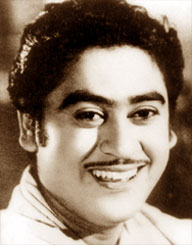 In the same Saigal mould, Khemchand Prakash introduced a young singer, who was to become in the years to come the legendary multifaceted maverick Kishore Kumar. The year was 1948, the film “Ziddi“, the actor Dev Anand (his first major hit and who became the visage for the voice of Kishore Kumar in the coming decades), the producer none other than Kishore Kumar’s elder brother Ashok Kumar who was then at the helm of the restructured Bombay Talkies and the song Marne ki duaayen kyon maangun in thumri style. It is indeed a pleasant surprise to associate Kishore Kumar with the song especially after hearing the frothy, flippant and fun loving numbers he sang in the later years. In the same film, he sang a dulcet duet Ye kaun aaya re karke ye solah singaar with Lata Mangeshkar who too was a rank newcomer then and whose budding career was given a major thrust by Khemchand Prakash.
In the same Saigal mould, Khemchand Prakash introduced a young singer, who was to become in the years to come the legendary multifaceted maverick Kishore Kumar. The year was 1948, the film “Ziddi“, the actor Dev Anand (his first major hit and who became the visage for the voice of Kishore Kumar in the coming decades), the producer none other than Kishore Kumar’s elder brother Ashok Kumar who was then at the helm of the restructured Bombay Talkies and the song Marne ki duaayen kyon maangun in thumri style. It is indeed a pleasant surprise to associate Kishore Kumar with the song especially after hearing the frothy, flippant and fun loving numbers he sang in the later years. In the same film, he sang a dulcet duet Ye kaun aaya re karke ye solah singaar with Lata Mangeshkar who too was a rank newcomer then and whose budding career was given a major thrust by Khemchand Prakash.
Incidentally, a couple of years before his first playback break, Kishore Kumar had sung a few lines in the song ‘Rangeela re, jawani mein sataake kahan kahan gaya re‘ with Paro in the film “Shikari” (1946)
Khemchand Prakash recorded one more weighty number Jagmag jagmag karta nikla chand poonam ka pyaara in the voice of Kishore Kumar for the film “Rimjhim” (1949). The maestro composed the song when he was still mourning the untimely death of his wife who had passed away just a fortnight before the recording of the song. The reflective lyrics by Bharat Vyas imbued in deep sorrow and grieving the ‘loss’ of the beloved… meri chandni bichhad gayi mere ghar mein hua andhiyara … truly depicted the maestro’s state of mind and suppressed feelings of deprivation which received full vocal expression in the soulful rendering of Kishore Kumar. Very deservedly, the song found a place of honour in the list of Kishore Kumar’s ten favourites identified by him sometime in the late 70s.
As mentioned earlier, Khemchand Prakash’s songs were predominantly women-oriented in the bhajan, Keertan, dadra, thumri, ghazal and semi-classical mould. Besides Khurshid, the other main female singers who got a new identity and success singing the maestro’s compositions include:
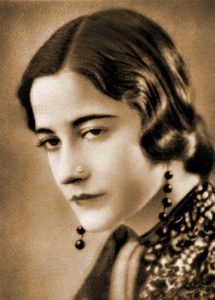 Jahan Ara Kajjan, the now forgotten but most popular singing sensation of the early 30s. Kajjan and Nissar were the two sensational singing stars before Saigal and others took over. Only two songs sung by Kajjan are available now and both under the baton of Khemchand Prakash: Ghoonghat patt naahin kholun in Dhrupad style and Kookat koyalia kunjan mein based on raag Brindabani Sarang from “Bharthari” ~ 1944);
Jahan Ara Kajjan, the now forgotten but most popular singing sensation of the early 30s. Kajjan and Nissar were the two sensational singing stars before Saigal and others took over. Only two songs sung by Kajjan are available now and both under the baton of Khemchand Prakash: Ghoonghat patt naahin kholun in Dhrupad style and Kookat koyalia kunjan mein based on raag Brindabani Sarang from “Bharthari” ~ 1944);
Amirbai Karnataki: Bhiksha de de maiyya pingala with Surendranath which was based on Rajasthan’s Laavni ‘Rang dhola the aao ji, hivde liptaay levo thaari naar ne‘, Chanda des piya ke jaa and Mora dheere se ghoonghat hata de piya from “Bharthari” and O roothe hue bhagwan and Koyi roke use aur ye kehde from “Sindoor” ~ 1947;
Shamshad Begam: Chali pee ko milan from “Ziddi” ~ 1948, Na tum aaye na neend aayi and Reh na sakoge hum bin from “Rimjhim” ~ 1949, Nahin fariyad karte hum from “Sawan Aaya Re” ~ 1949;
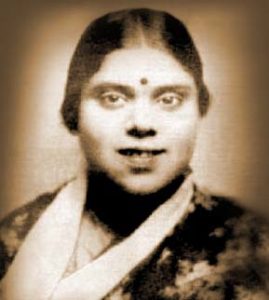 Rajkumari: Ek teer chala, Main woh dulhan hoon raas na aaya jise singaar and, not the least, Ghabraake jo hum sarko takraayen to achha ho from the maestro’s musical milestone “Mahal”. The song was recorded with just five or six musicians; Khemchand Prakash played the Harmonium and his brother Basant Prakash played the Tabla. In fact, the last mentioned song virtually kept Rajkumari alive till she died 50 years later and even thereafter.
Rajkumari: Ek teer chala, Main woh dulhan hoon raas na aaya jise singaar and, not the least, Ghabraake jo hum sarko takraayen to achha ho from the maestro’s musical milestone “Mahal”. The song was recorded with just five or six musicians; Khemchand Prakash played the Harmonium and his brother Basant Prakash played the Tabla. In fact, the last mentioned song virtually kept Rajkumari alive till she died 50 years later and even thereafter.
Yet another upcoming female singer who was given a major thrust by the maestro in her formative years and who achieved the pinnacle of popularity singing under his baton was the nightingale Lata Mangeshkar. She first made her mark with the song Dil mera toda which she sang for Ghulam Haider in “Majboor” (1948).
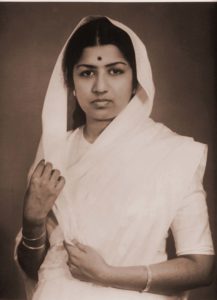 Ghulam Haider had left Filmistan following a squabble with S Mukerji, one of the bosses of the company, over the ‘thin’ voice of Lata Mangeshkar. He then made his way to Bombay Talkies and made her sing for the film “Majboor”. Likewise, Khemchand Prakash too fell out with his mentor Chandulal Shah over the same issue of Lata Mangeshkar’s voice and parted ways with him. And he too recorded her in yet another film of Bombay Talkies which was being made simultaneously with “Majboor”. The lesser known film was “Asha” in which Lata Mangeshkar got to sing three songs viz. Kit jaaye base ho murari, Ik moorat manohar re and Door jaaye re. Unfortunately, both the film and the songs went unnoticed.
Ghulam Haider had left Filmistan following a squabble with S Mukerji, one of the bosses of the company, over the ‘thin’ voice of Lata Mangeshkar. He then made his way to Bombay Talkies and made her sing for the film “Majboor”. Likewise, Khemchand Prakash too fell out with his mentor Chandulal Shah over the same issue of Lata Mangeshkar’s voice and parted ways with him. And he too recorded her in yet another film of Bombay Talkies which was being made simultaneously with “Majboor”. The lesser known film was “Asha” in which Lata Mangeshkar got to sing three songs viz. Kit jaaye base ho murari, Ik moorat manohar re and Door jaaye re. Unfortunately, both the film and the songs went unnoticed.
In the same year, for Bombay Talkies’ “Ziddi”, Khemchand Prakash recorded as many as five songs in the voice of Lata Mangeshkar, songs like Chanda re jaa re jaa re, Tujhe o bewafa hum, Jaadu kar gaye kisike naina and the duet Ye kaun aaya re with Kishore Kumar all of which became immensely popular.
But it was with her melancholy filled and pathos laden songs Dil ne phir yaad kiya, Mushqil hai bahut mushqil and, not the least, the all time evergreen haunting heart stopper Aayega aanewala in Bombay Talkies’ mystery-laden film “Mahal“, that Lata Mangeshkar ‘arrived’ with a big bang. She came, she saw, she conquered, she concurred and never to look back again, thanks to Khemchand Prakash.
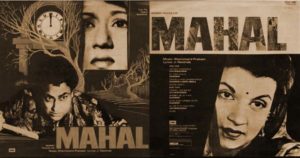
Before signing Mahal, Khemchand Prakash had lost his wife and become lonely. His health was also giving way and he had to be hospitalised. But soon after his recovery, Kamal Amrohi, the director of the film signed the maestro despite his ailment and the changing trend in music in the post-independence era as he felt only Khemchand Prakash could do justice to the untried theme of unrequited love. And the maestro did not let him down.
While the foundation of the song citadel was being laid, only Khemchand Prakash and Kamal Amrohi were confident about its final shape and success. The very first tune composed (the tune that we hear now) was approved instantly by Kamal Amrohi much to the chagrin of the lyricist J Naqshab who felt that the composer had not worked hard on the song and should have been asked to work on more tunes.
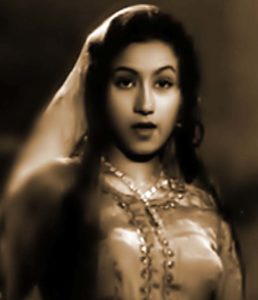 Lata Mangeshkar rehearsed the song for almost a week before it was recorded finally in her mesmerising voice to go on the breathtakingly beautiful Madhubala. The song had become popular even before the release of the film and the film, when released, went on to become a big box office hit thanks to the haunting refrain ‘Aayega aanewala‘ (probably, the shortest mukhda heard) which kept appearing in the film again and again to build up the suspense element.
Lata Mangeshkar rehearsed the song for almost a week before it was recorded finally in her mesmerising voice to go on the breathtakingly beautiful Madhubala. The song had become popular even before the release of the film and the film, when released, went on to become a big box office hit thanks to the haunting refrain ‘Aayega aanewala‘ (probably, the shortest mukhda heard) which kept appearing in the film again and again to build up the suspense element.
Aayega aanewala was a forerunner to a new genre of mystique songs like Aaja re pardesi, Kahin deep jale kahin dil, Jhoom jhoom dhalti raat, Gumnaam hai koyi, Naina barse rimjhim rimjhi, Tu jahan jahan chalega to name a few and coincidentally, all of them were sung by the ‘ghost’ voiced Lata Mangeshkar!
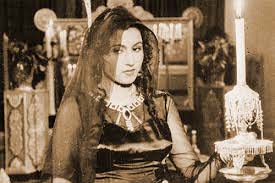 “Mahal”, the mystery-laden monumental marvel was truly a haunted edifice with no plot of murder in it and yet an intriguing blockbuster! The ‘torchbearer’ film (first of kind in the suspense genre) and the haunting song (also first of its kind) remain the most creative masterpieces in the short but illustrious career of Khemchand Prakash.
“Mahal”, the mystery-laden monumental marvel was truly a haunted edifice with no plot of murder in it and yet an intriguing blockbuster! The ‘torchbearer’ film (first of kind in the suspense genre) and the haunting song (also first of its kind) remain the most creative masterpieces in the short but illustrious career of Khemchand Prakash.
Unfortunately, Khemchand Prakash did not live to savour the sweet success of the film and the unprecedented popularity of the song; his addiction to liquor had its repercussions on his already failing health and ended in a severe incurable stomach ailment to which he succumbed on the fateful day of 10 August, 1950; he died at the young age of 42 just two months before the unveiling of the mystery-laden musical marvel – “Mahal”.
When he died, he left about eight to ten films incomplete which were completed by other composers like Basant Prakash, Bhola Shreshth and Manna Dey.
In a short but distinguished and illustrious career of just 12 years (1939 ~ 1940), Khemchand Prakash composed music for about 40 films. He was among the pioneers and peers of the 30s and 40s but unforgivably, Khemchand Prakash is a forgotten name today probably because of his untimely death.
Had he lived longer, he would have created many more musical marvels like “Tansen” and “Mahal” two of his milestone movies ~ one of the pre independence era and the other of the new and emerging independent India; had life not afforded the maestro the unkindest cut of all, he would have made many more melodious miracles like Kishore Kumar and Lata Mangeshkar out of mortals. Sadly, seldom his name is taken in musical events which feature songs of his legendary ‘creations’ like Kishore Kumar and Lata Mangeshkar!
To commemorate the landmark event of Khemchand Prakash’s Birth Centenary (12th December, 2007), KEEP ALIVE organised four musical tributes titled Khemchand Prakash : The Lilting Luminary to perpetuate the immortal musical works of the unsung genius. If one is to believe in the Indic philosophy of reincarnation, he is sure to find expression in the rebirth of a new coming; Aayega, aayega, aayega… aayega… aayega aanewala!!.
Popular Hits of Khemchand Prakash
| No. | Name of Film | Song | Singer/s |
| 01 | Diwali | Kaahe panchhi bawariya | Kantilal – Vasanti |
| 02 | Holi | Phagun ki rutt aayi re | A Ojha ~ Sitara |
| 03 | Holiday in Bombay | Jaaye na paayi ho hamari gali aay ke | Vatsala Kumtekar |
| 04 | Pardesi | Pehle jo mohabbat se inkaar kiya hota | Khurshid |
| 05 | Pyaas | Bhulana na, yaad karo na karo | Ishwarlal ~ Snehprabha |
| 06 | Shaadi | Bhigoyi mori saari re | Ishwarlal ~ Khurshid |
| 06 | Shaadi | Hari ke gunn gaaun main | Khurshid |
| 07 | Dukh Sukh | Ab der na kar saajan | Mukesh ~ Sitara |
| 08 | Tansen | Ab raja bhaye more baalam | Khurshid |
| 09 | Tansen | Barso re | Khurshid |
| 10 | Tansen | Ghata ghanghor ghor | Khurshid |
| 11 | Tansen | Baagh lagaadun sajni | K L Saigal |
| 12 | Tansen | Bina pankha ka panchhi hoon main | K L Saigal |
| 13 | Tansen | Diya jalao jagmag jagmag | K L Saigal |
| 14 | Tansen | Kaahe gumaan kare | K L Saigal |
| 15 | Tansen | Rumjhum rumjhum chaal tihaari | K L Saigal |
| 16 | Tansen | Sapta suran teen grama | K L Saigal |
| 17 | Tansen | More balapan ke saathi chhaila | K L Saigal ~ Khurshid |
| 18 | Bhanwra | Diya jisne dil lut gaya woh bechara | K L Saigal |
| 19 | Bhanwra | Hum apna unhen bana na sake | K L Saigal |
| 20 | Bhanwra | Kya humne bigaada hai | K L Saigal |
| 21 | Bharthari | Bhiksha de de maiyya pingala | Surendra ~ Amirbai |
| 22 | Bharthari | Chanda des piya ke jaa | Amirbai Karnataki |
| 23 | Bharthari | Mora dheere se ghoonghat hata de piya | Amirbai Karnataki |
| 24 | Bharthari | Kookat koyaliya koonjan mein | Jahan Ara Kajjan |
| 25 | Bharthari | Ghoonghat patt naahin kholun | Jahan Ara Kajjan |
| 26 | Mumtaz Mahal | Dil ki dhadkan bana diya unko | Khurshid |
| 27 | Mumtaz Mahal | Jala patanga to ismein qusoor kiska hai | Khurshid |
| 28 | Mumtaz Mahal | Jo humpe guzarti hai | Khurshid |
| 29 | Shehanshah Babar | Mohabbat mein saara jahan jal raha hai | Khurshid |
| 30 | Dhanna Bhagat | Panchhi pinjra hua purana | Khan Mastana |
| 31 | Sindoor | Koyi roke use aur ye kehde | Amirbai Karnataki |
| 32 | Sindoor | O roothe hue bhagwan | Amirbai Karnataki |
| 33 | Asha | Door jaaye re raah meri aaj teri raah se | Lata Mangeshkar |
| 34 | Asha | Ik moorat manohar re | Lata Mangeshkar |
| 35 | Asha | Kit jaaye base ho murari | Lata Mangeshkar |
| 36 | Ziddi | Chanda re jaa re jaa re | Lata Mangeshkar |
| 37 | Ziddi | Jaadu kar gaye kisike naina | Lata Mangeshkar |
| 38 | Ziddi | Tujhe o bewafa hum zindagi ka aasra | Lata Mangeshkar |
| 39 | Ziddi | Marne ki duaayen kyon maangun | Kishore Kumar |
| 40 | Ziddi | Ye kaun aaya re karke ye solah singaar | Kishore Kumar ~ Lata |
| 41 | Mahal | Aayega aanewala | Lata Mangeshkar |
| 42 | Mahal | Dil ne phir yaad kiya | Lata Mangeshkar |
| 43 | Mahal | Mushqil hai bahut mushqil | Lata Mangeshkar |
| 44 | Mahal | Ghabrake jo hum sar ko takraayen | Rajkumari |
| 45 | Mahal | Main woh hansee hoon | Rajkumari |
| 46 | Mahal | Ye raat phir na aayegi | Rajkumari ~ Zohrabai |
| 47 | Rimjhim | Jagmag jagmag karta nikla chand | Kishore Kumar |
| 48 | Rimjhim | Na tum aaye na neend aayi | Shamshad Begum |
| 49 | Sawan Aaya Re | Ae dil na mujhe yaad dila baaten purani | Mohd Rafi ~ Shamshad |
| 50 | Sawan Aaya Re | Nahin fariyad karte hum | Shamshad Begum |
| 51 | Jaan Pehchan | Armaan bhare dil ki lagan | Talat Mahmood ~ Geeta |
Manohar ‘Mohabbat’ Iyer

